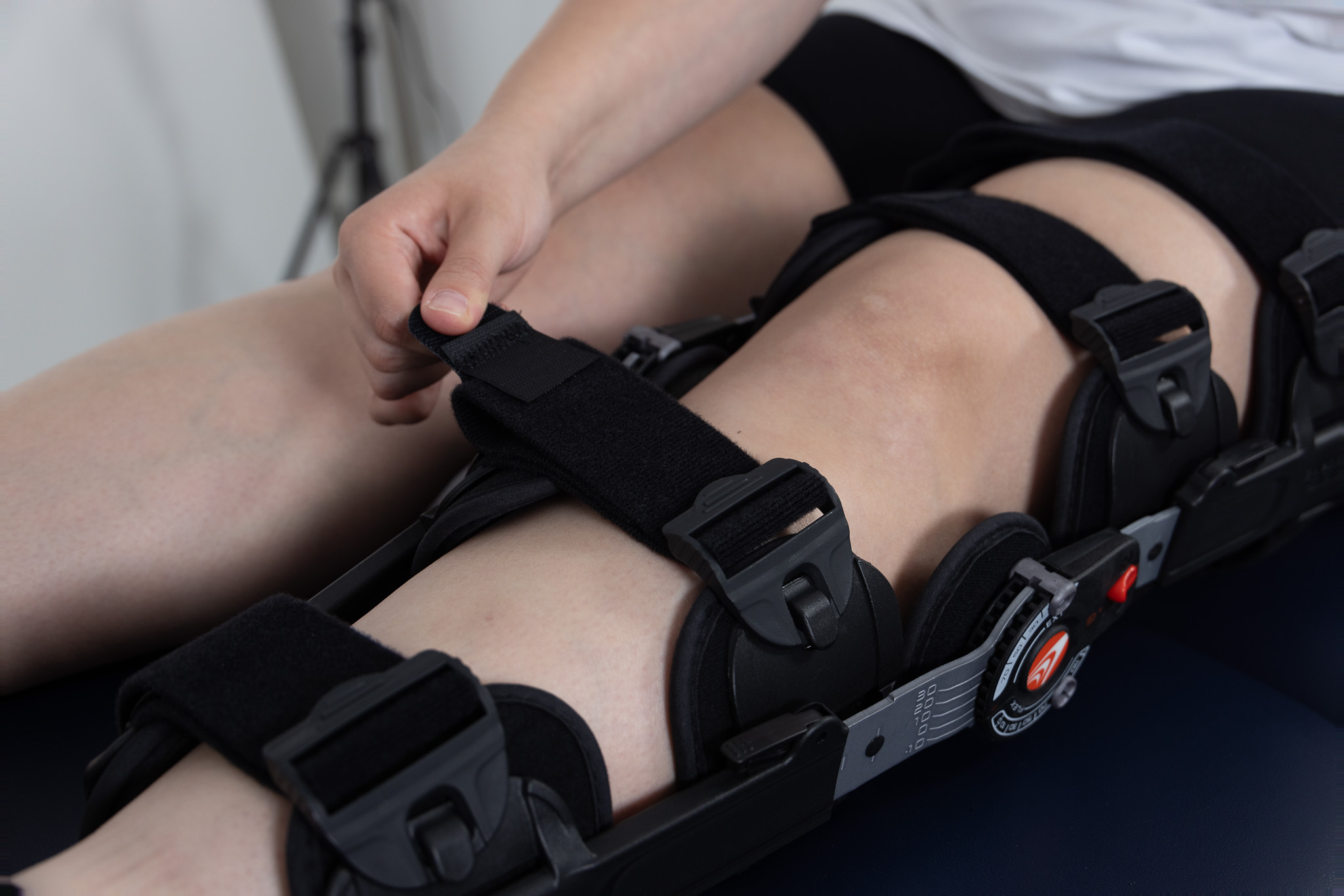
Using a range of motion (ROM) knee brace
You have been supplied with a range of motion (ROM) knee brace by your Physiotherapist or Orthotist
ROM knee braces are used to:
- Restrict some knee movements. This will protect your knee during rehabilitation and allow the tissues to heal.
- Protect your knee joint after a surgical repair and/or an injury.
- Provide joint stability due to muscle weakness.
- Manage fractures and ligament or tendon injuries in and around your knee.
How does ROM knee braces work?
The ROM knee brace has a dial located at either side of your knee joint. This limits how much your knee can bend. This dial is set by your Physiotherapist or Orthotist to restrict or limit movement as advised by your Consultant.
How do I put on my ROM knee brace?
|
When applying the brace, lie flat (ideally on a bed). |
 |
|
Open the brace out flat with the pads facing upwards and position it behind your knee with the hinge joints at knee level and the widest part of the brace at your thigh. |
 |
|
Wrap the brace around your leg, making sure the hinged joints are in line with your knee. This will allow your knee and the brace to bend together.
|
 |
|
Ensure that the hinges remain in the same position when you tighten the straps or clip the buckle into the hooks. Ideally wear your brace directly on your skin. The brace must not be worn over baggy clothing as the clothing may crease and cause skin damage or make the brace slip down.
|
 |
|
The brace should be firm but not so tight as to restrict your circulation. You should be able to slide two fingers comfortably underneath each strap. You may have to tighten and adjust the brace to get a good fit. If you initially had swelling that has reduced it will cause the brace to become loose, and so the straps would need to be tightened. To take the brace off you unclip all four hooks along the side of the brace. |
 |
|
Once the ROM knee brace has been set up for you by the Physiotherapist or Orthotist you should not try to adjust the knee joints yourself. |
 |
|
It can be locked straight so that you cannot bend your knee at all. This is done by pushing the lock button above each ROM dial downward. Your leg must be straight before the knee joints can lock. This should only be done if you were advised to do this by a healthcare professional. |
 |
When should I wear my ROM knee brace?
You should wear your brace at all times including at night unless advised otherwise by your therapist. However, you will need to undo or remove the brace for washing, dressing and to allow application of ice and for skin checks. The brace should be removed with your leg supported, ideally lying in bed. It is best to avoid showering or bathing and have a strip wash.
Your Physiotherapist will advise you on how much movement is recommended at your knee and the amount of weight you can put on your leg when walking e.g. full weight bearing, partial weight bearing or non-weight bearing.
What problems should I be aware of?
If you notice any of the following, please contact the Physiotherapy / Orthotic department as soon as possible:
- Soreness that doesn’t go away after 40 minutes.
- Sores or blisters on your skin.
- Pain, irritation or rubbing.
- Any damage to your knee brace that limits it working.
- Increased swelling.
Who do I contact if I have a problem?
If you are concerned about the condition, fit or fitting of your brace or if you need any help, please contact the department that supplied it to you:
Physiotherapy Department on 0121 812 3500 or Orthotic Department on 0121 812 3347